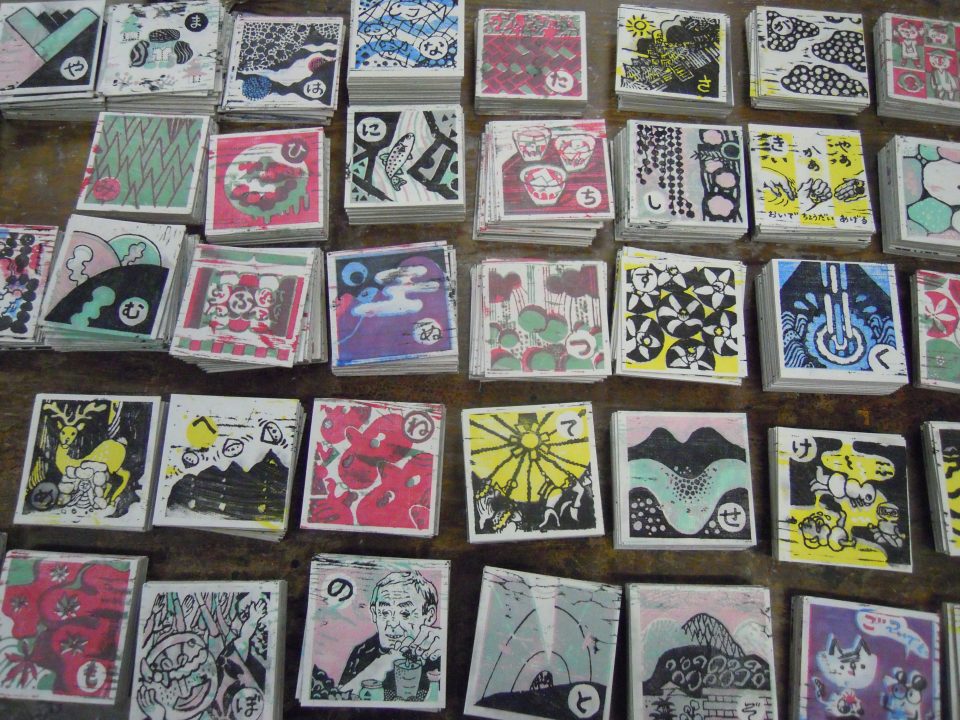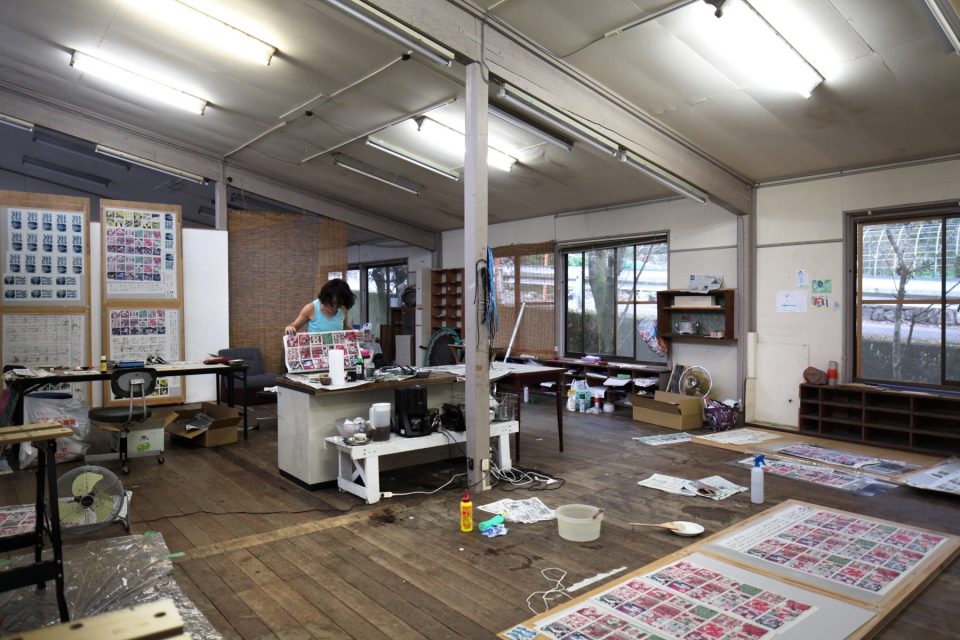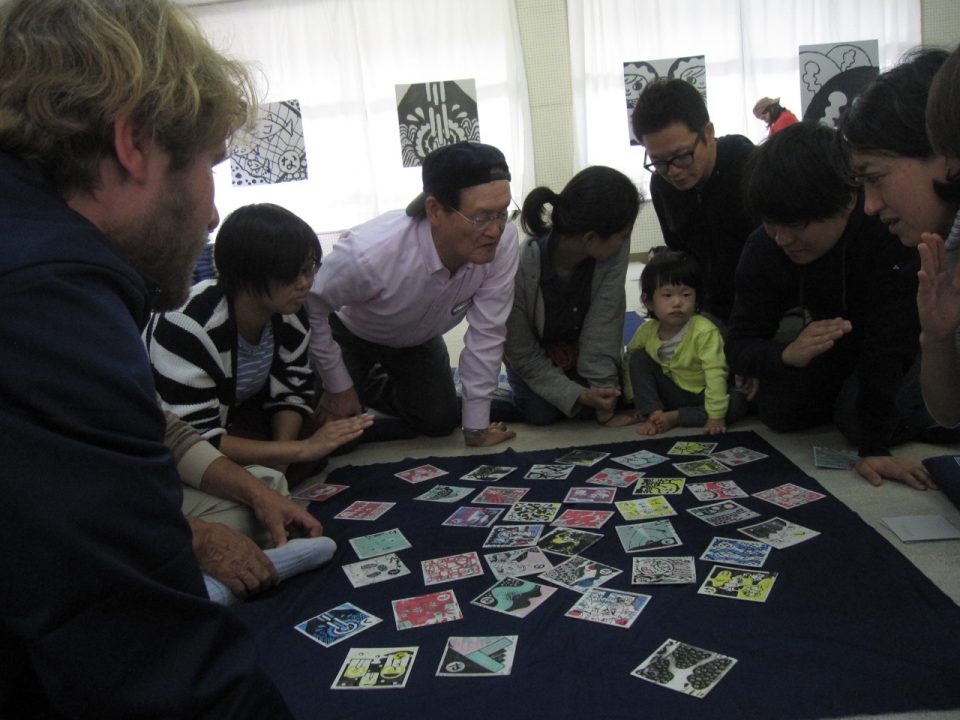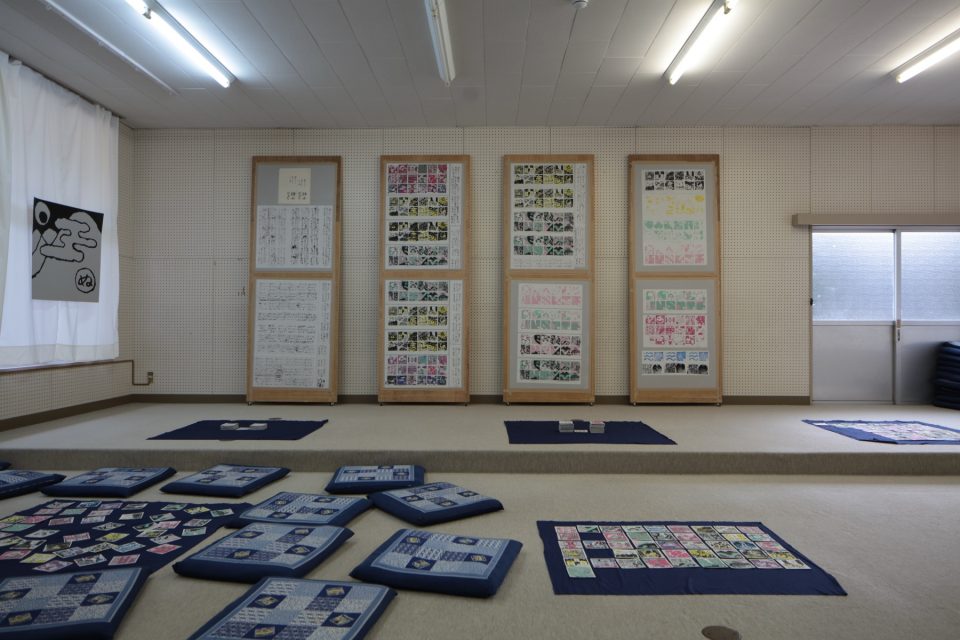
Maki Shimizu
2016 Kamiyama Artist in Residence participant
Born in Ibaraki Prefecture. Bachelor of Fine Arts degree from Tsukuba University (printmaking), and master’s degree from Bielefeld University (graphic design) in Germany. Since 2006, she has been based in Berlin as an artist and illustrator, active in creating art, installations, comics, live events, and more. One element of her life work is to observe, then express moments from daily life in sketches. She is interested in the act of using art as a direct connection to society and the reverberations that can arise from this. Her main theme is the way composition made up of bold and simple lines and color surfaces can create a two-dimensional media that enables people to share deep emotions. With her active and dynamic personality and her work that crosses over walls and boundaries of time and cultural backgrounds, she has gained praise around the world. In recent years, she has gone beyond exhibitions and printed materials, to explore new possibilities in art exchange and art education through lectures and workshops. Currently, she participates in various projects as a freelance artist in a shared atelier in Berlin while also teaching art at elementary schools and lecturing part-time at art universities. (text in 2016)
Artist's Website

—————
Kamiyama karuta
The artist turned her attention to a Japanese traditional card game called karuta, which has an equal number of illustrated picture cards and verse cards. She explored the role of art within daily life; when it is art not just for art’s sake in localities and society. Poems and words, pictures and letters, the artist focused on this fun and unique Japanese cultural phenomenon, and created a visual representation of the Kamiyama identity, both from within and without. She explored the possibilities in methods of expression, using local materials (washi paper and wood) and traditional water-based woodblock printing techniques together with woodblocks carved using the laser cutter at the Kamiyama Maker’s Space, expressing the unique qualities of the region with a fusion of traditional and cutting-edge technology, even exploring the possibilities ofrelationships between art, economics, and industry.
She expressed the rhythm of the words, the feelings and laughter instilled in the short poems, the themes tailored to the region in card-sized illustrations, in both the verse cards and picture cards. She took note of the square ceiling tiles illustrated with pictures that can be found in Kamiyama’s Yorii-za as well as in many shrine ceilings in Kamiyama and around Japan, and chose to make square karuta cards rather than traditional rectangular-shaped cards in order to reflect the unique characteristics of Kamiyama. The illustrations expressed on the picture cards are sophisticated motifs with Japanese aspects as well as some Western influence that express the cultural aspects of Kamiyama and greater Tokushima prefecture. There is an added aspect of typical woodblock print characteristics, which resulted in simplifying the motifs into a more abstract expression.
I want to taste the lingering notes of communication that comes through play, the echoes of art through society.
Exploring karuta as a medium of expression, of art not only for art's sake, and the multifaceted possibilities within daily life.
GRID POEM

